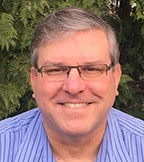

Despite the fact that you have taken every precaution, hitting utility lines or other hidden infrastructure is still relatively common. Even after all the records are consulted and metal detector tests completed, you can dig up an entire storage tank that wasn’t accounted for or find a random pipe with no apparent usefulness.
Having a tool that can get you down there without damage is a significant benefit to those in the field. SCS recommends using the Hydrovac or Air Knife technologies, tools that can save money and time when working on sites with sensitivities or a longer historical background when the risks are highest.
SCS uses these tools when drilling at a transfer station near older or deeper power lines. We find utilities can be buried deeply below ground or are not encased in metal pipes, making metal detectors useless.
When remediating a historic property for developers with nearby utility lines and there’s a question about the accuracy of the records, it is far safer and cost efficient to use these newer technologies to dig a hole as small as for setting a mailbox, or as large as digging an entire site for construction.
The Hydrovac and Air Knife will both remove soil cover and allow you to see any underground utilities or infrastructure before excavation or drilling. The Hydrovac uses pressurized water and a vacuum system to remove soil. The Air Knife accomplishes the same thing using compressed air instead of water.
SCS Engineers can provide a range of equipment sizes and capabilities including:
By Thomas Karwoski and Sherren Clark
About the Authors:
 Mr. Karwoski has 30 years of experience as a hydrogeologist and project manager. He has designed and managed investigations and remediations at existing and proposed landfills; and industrial, Superfund, military, and petroleum sites.
Mr. Karwoski has 30 years of experience as a hydrogeologist and project manager. He has designed and managed investigations and remediations at existing and proposed landfills; and industrial, Superfund, military, and petroleum sites.
 Ms. Clark has more than 25 years of experience in civil engineering and environmental science, with a technical background in both engineering and hydrogeology. She manages multidisciplinary projects including landfill design and monitoring, brownfield site investigation and remediation, and environmental management and permitting for private and public sector clients.
Ms. Clark has more than 25 years of experience in civil engineering and environmental science, with a technical background in both engineering and hydrogeology. She manages multidisciplinary projects including landfill design and monitoring, brownfield site investigation and remediation, and environmental management and permitting for private and public sector clients.
Links to SCS Services: CCR, Landfill, and Remediation pages.